At an age when most people are just starting to train in martial arts, Michael Janich was already an instructor. Also while in his teens, he studied a wide variety of self-defense and edged-weapons systems. During his nine years in the U.S. Army and several years of working on the government’s POW/MIA recovery efforts, he took advantage of postings in various parts of Southeast Asia to further his study of martial arts and knife tactics.
Since returning to the U.S. in the early 1990s, he has produced instructional videos, written books and magazine articles, and designed knives – all while still learning and instructing empty-hand and knife techniques. Over the years, he refined and expanded his system of knife fighting into its current (but ever-evolving) form: Martial Blade Concepts (MBC). He describes MBC as “a truly unique self-defense program that is deeply rooted in traditional Filipino knife fighting methods, yet is specifically tailored to meet the complex tactical and legal requirements of today’s society.”
As well as training students via MBC, Janich is currently the Special Projects Manager for the Spyderco Knife Company, co-host of the Outdoor Channel’s The Best Defense TV show, and a PDN contributor. In 2010, Janich was selected as the Black Belt Hall of Fame Weapons Instructor of the Year by Black Belt Magazine.
PDN wanted to give readers a chance to learn more about our contributors/instructors via their first-person responses to our questions. Here’s what Michael Janich had to tell us:
Why did you decide to become a trainer?
After I had been in the martial arts for a number of years, it was very clear to me that there is a huge difference between being a skillful practitioner and an instructor. It was also clear that the traditional martial arts—and all the dogma that often pollutes them—are not the quickest route to developing usable self-defense skill. I became a trainer to teach average people how to protect themselves through logical, practical methods that make sense.
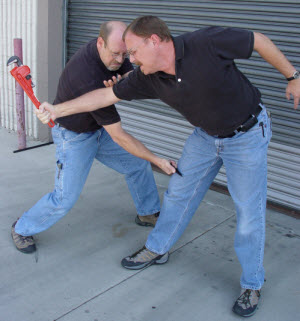
MBC focuses on stopping power rather than lethal force. A cut to the quadriceps muscle is an excellent means of immobilizing an attacker.
Lots of people teach fighting with knives—in what ways do you teach it differently?
Martial Blade Concepts (MBC) is based on combat-proven methods of the Filipino martial arts adapted to the realities of modern self-defense. In addition to being tuned to the use of the type of knives we are actually permitted to carry legally (typically small folding knives), it emphasizes stopping power over lethality. The shooting world learned long ago that the goal of using a firearm in self-defense is to stop the attacker so he is unable to cause you harm. Although lethality may be a by-product of that action, stopping power is the goal. The same thing applies with knives, but it’s even more critical because you are operating at contact distance. If you apply lethal force and inflict a mortal wound, but it doesn’t incapacitate your attacker quickly and efficiently, he may still kill or seriously injure you. That’s not good enough. MBC’s well-documented emphasis on stopping power also makes it more legally defensible than traditional knife systems—another key quality of a modern self-defense system.
My primary method of motivation is getting students to understand the logic of the system and why we do things the way we do. Unlike traditional martial arts, where students are required to perform rote techniques because “that’s the way they’re done,” MBC and the other skill sets I teach are all based on doing things for a reason. Every structure and every tactic is based on achieving practical function as efficiently as possible. When you understand why something works, you are more inclined to do it. That’s much better than an esoteric “wax on, wax off” approach.
What type of person should your students expect to deal with when they train with you?
An instructor who truly wants them to learn and is not hung up on his own ego.
I had the great honor of working with and learning from the late Col. Rex Applegate, the close-combat instructor for the OSS (Office of Strategic Services—the predecessor of the CIA) during World War II. His commitment to practical, no-BS tactics designed to empower average people with powerful combative skills still inspires me. I also had the privilege of working with Kelly McCann, founder of Crucible Security Specialists. Kelly is, in my opinion, the best trainer in the business—hands down. He is in every way just as much an icon as Col. Applegate was, but his talents and skill sets are much more modern and far more comprehensive.
And who do you think are some of the best instructors teaching in your field today?
That’s a long list, but the ones I respect the most include Kelly McCann, James Keating, Cardo Urso, and Rob Pincus.
What can students expect to take away from your courses?
Usable self-defense skills and a solid understanding of why they will work. They will also have the basic mechanics of the training methodology needed to develop those skills and the reflexes necessary to apply them in a critical incident.
Do you have a “typical” student? What is s/he like?
Most MBC students tend to be people who have trained in the traditional martial arts and grew disillusioned with them as a means of developing real self-defense skill.
I also get a lot of shooters who either cannot get a CCW permit in their area or are wise enough to realize that, even with a CCW, a knife is a very potent backup or alternate weapon—especially if you travel frequently.
What’s your training philosophy?
We have a number of “sayings” in MBC that summarize my training philosophy pretty well. One of the most important is “You don’t have to fight like me; you just have to fight well.” What that means is that everyone has different physiques, physical attributes, and limitations. Those will determine what techniques work best for you. Rather than a traditional martial art, where the goal is to get everyone to look exactly the same, my goal is to make everyone capable based on the bodies they’ve got.
Another guiding principle is “When in doubt, lower your standards.” This is kind of an irreverent reminder that function is always more important than form. In a self-defense situation, focus on stopping the attacker and don’t worry about technique. With this in mind, we practice “deconstructing” techniques—eliminating movements to boil them down to their bare-minimum functional form.
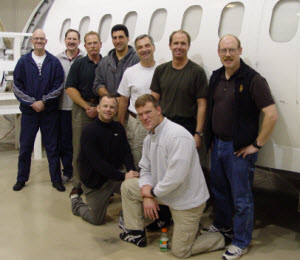
Janich was one of 12 subject-matter experts on self-defense selected by Transportation Security Administration to participate in the development of an aircrew self-defense program.
Looking ahead, what do you see in the future for yourself as a trainer?
Everything that I’ve been working on during the past 10+ years has paved the way for some amazing opportunities, like co-hosting The Best Defense and being involved in numerous writing and video projects. These opportunities have given MBC and the other programs I teach broad exposure and have generated a lot of interest in my approach to self-defense. At the same time, I have been working very closely with my most dedicated students to develop them as instructors. The ultimate goal is for them to supplement my efforts as an instructor to bring MBC, Counter-Blade Concepts, Martial Cane Concepts, Damithurt Silat (my empty-hand combatives system) and Sobadiwan Eskrima (my stick fighting system) to a broader audience.
Part of my training lineage includes Col. Rex Applegate’s method of handgun point shooting, as well as more modern aspects of shooting. I have taught a few courses in point shooting and handgun retention to selected law enforcement and military students, but I hope to expand that instruction in the future.
Finally, I am in the process of documenting the various aspects of my teaching through instructional videos. I am doing this through Stay Safe Media, a partnership that I share with videographer Michael Rigg, who also happens to be a full instructor in MBC.
How about for your particular training industry?
MBC straddles the lines of a number of different industries, so it’s a matter of perspective. The martial arts industry will continue to evolve, but will remain pretty broad to cater to the different reasons that people choose to train. The self-defense industry, however, is getting smarter and more focused. Although there is still a lot of misinformation out there, motivated students are learning how to sort through it to find the stuff that makes sense. In that regard, MBC and my other instruction will continue to shine.
What is something that you’ve changed your mind about and why?
Students who trained with me 10 years ago—or even five years ago—are always surprised when they attend a current course and see that MBC has evolved. They often comment that “We used to do it this way.” My answer is typically that the old way still works, but the new way works better or is a skill that is easier to learn and maintain. Many traditional martial arts focus on preserving the system, so by definition historical consistency becomes more important than the student. We don’t work that way. We continue to evolve, in many cases to adapt our skills and methods to emerging threats—like actual trends in violent crime, which we track very closely.
How about something that you used to teach but now realize isn’t the best thing to teach your students or possibly a technique that you have replaced with something better?
One major change that I’ve implemented has to do with the order of presenting information. Previously, I used to emphasize reflex training or “flow” drills early in the training process, drawing movements from them to teach applied technique. When I found that most of my teaching was in a seminar context that didn’t offer enough time to master flow drills, I switched to focusing on a very logical progression of technique instruction. This progression teaches students the “master” sequences of the system and then reinforces them as they are applied to different types of attacks. In this way, the students learn to immediately grasp and apply the critical elements of the system, including proper anatomical targeting.
Later, I introduce the flow drills to show them how the drills provide structured, high-speed repetition of technique that refines their skills and develops reflex. Some students never really explore the drills and are content to stick with technique practice. That still meets their needs because they have the skills they require to defend themselves. Their reflexes and level of skill will not be as highly developed as someone who understands and practices the drills, but their needs are still met.
We want to thank Michael Janich for taking time out of his busy schedule to give PDN this in-depth look at his training philosophy and experience. In future, look for more articles and videos from Michael here on PDN. If you’re interested in training with him, or just learning more about MBC, check the Martial Blade Concepts website.
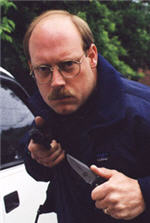
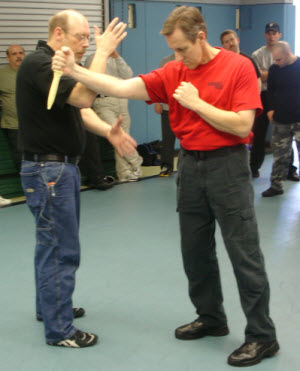
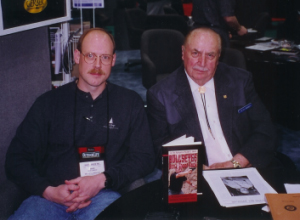

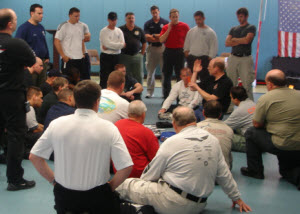
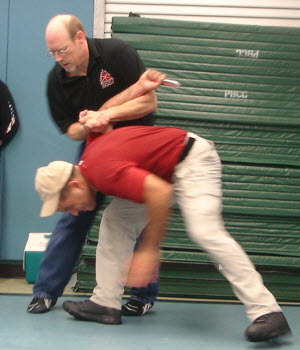
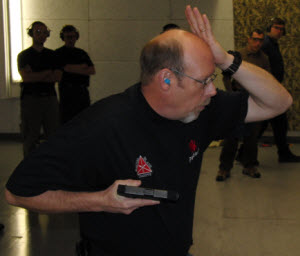
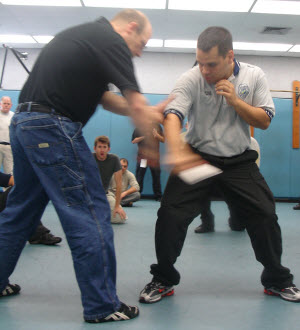
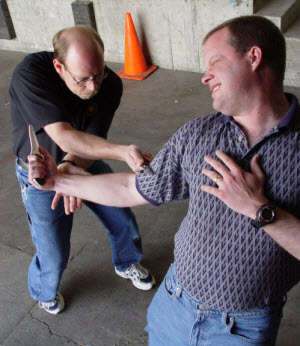
Mike, How were you a "team leader" with the JPRC when in fact you were a translator? And why were you declared persona non grata and ejected from a recovery dig on the old DMZ, leaving the JPRC a short time later? Just ask'in?
I watched a recent show and saw part of a drill. Didnt hear all, but the name of the drill sounded like the whobutt drill? What's the actual name and is there a link you could send me?
Are there any training groups or even individuals near the Yucca Valley or 29 Palms, California areas I might be able to get into contact with?
Michael, I just ordered a Ronin2 and was curious: if a person needed to defend against a dog attack and stabbed around the ribs, would it be possible to penetrate or would the tip break?
Michael you demonstrated a Neck knife On the best defense. Where can one like that be purchased. I like the design. Jack